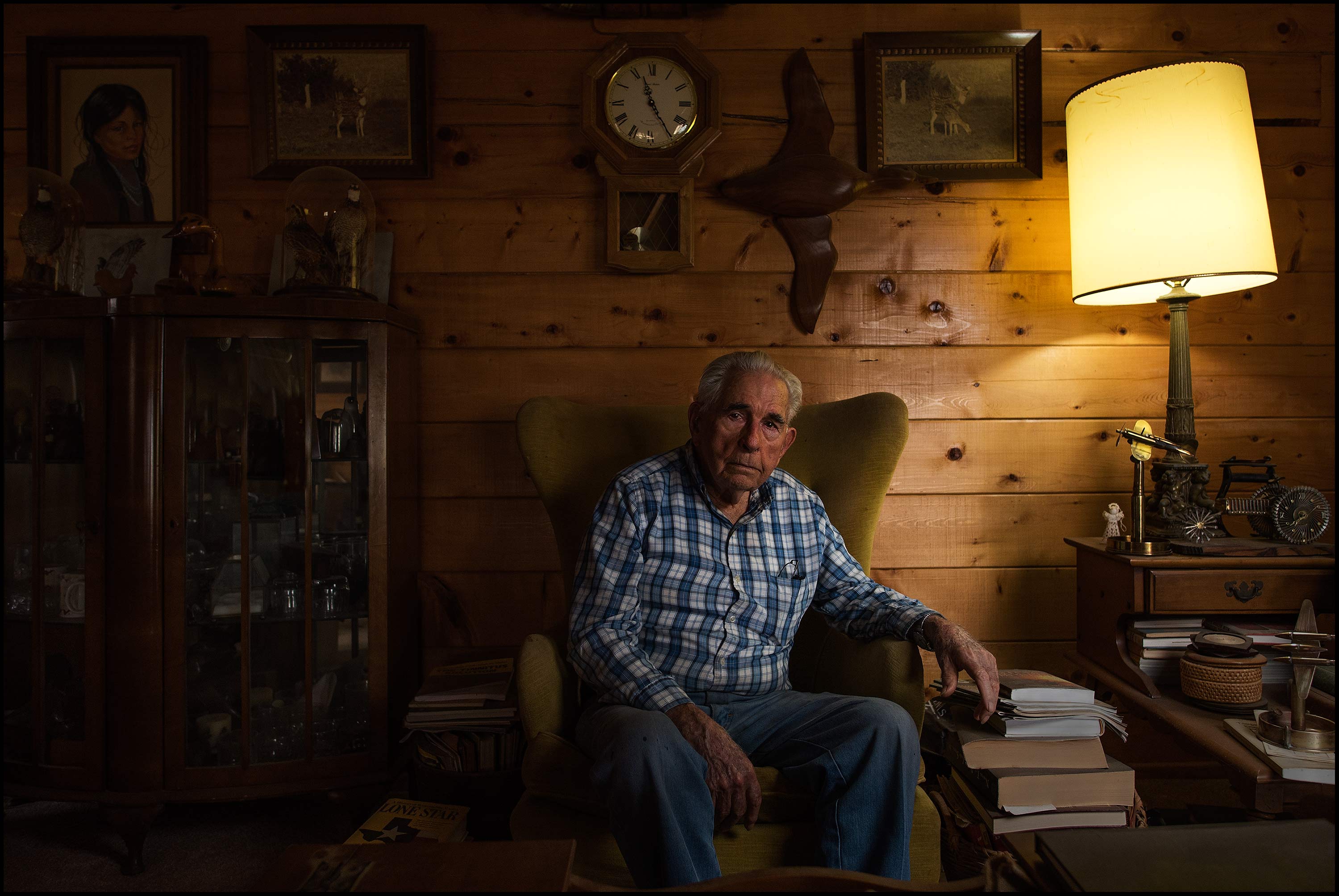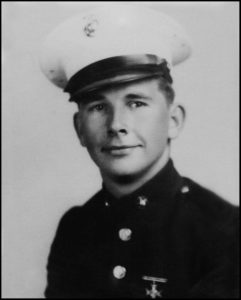
Gray Majirus
MotorT Non-Comm
on Guadacanal
Gray Majirus
Master Technical Sergeant, USMC
1940–1945

Gray Majirus
San Diego, 1940
I ended up with about 100 drivers under me and we eventually shuffled supplies from Henderson Field on Guadalcanal, to ships going to the Bougainville campaign.
I was born in Boerne County, Texas in 1922. I did not get through the 7th grade, and that was the extent of my education. When I was 14, I and another guy went to work on a ranch south of Boerne. We ran horses, cattle, sheep and goats—just us two. In 1940, I joined the Civilian Conservation Corps. Things were hard back then.
I was in the CCC in Wyoming when Marine Corps recruiters from Denver came through. Two of us went to Denver with them. On September 21, 1940, I joined the Marine Corps and was shipped to San Diego, California. At that time, they lit into you hard. The Marines are still the best when it comes to training, but it wasn’t like it was in the 40’s. In boot camp, the only way to get along was to do what you were told. After boot camp, we moved to Camp Elliott, 10-15 miles north of San Diego. I was put in Motor Transport in an artillery regiment and that is where I stayed. On December 7, 1941, me and two other sergeants were coming back from Tijuana. We were going through Arizona when we turned the radio on and they said, “All 11th Naval personnel, report to your bases immediately.”
In 1942, I moved to a camp in the desert and was in the skeleton crew that became the 3rd Marine Division. That is where the division was being formed and trained. In March of 1943 we left there and went to New Zealand on a troop ship. We trained in New Zealand for four months and then went to Guadalcanal for a year. The island was secure, but there was still fighting. I was a Motor Transport NCO and I had about 15 drivers and mechanics under me. My main job was taking care of the trucks and transports, driving and overhauling them for the 12th Marines Headquarters & Supply. If a vehicle was blown up in the jungle, we’d pick it up, bring it in and repair it if we could. I was a shop foreman for all practical purposes. I had a pit dug so we could drive over it and service the vehicle. When there was an air raid, we’d all jump in there instead of a foxhole.
I ended up with about 100 drivers under me and we eventually shuffled supplies from Henderson Field on Guadalcanal, to ships going to the Bougainville campaign. This was mid-1943 until the end of 1943. I left Guadalcanal and went to Guam, still as an NCO in Motor Transport. During that time, I had malaria 10-to-15 times. It would knock you coming and going. You’d run a fever of 102 or 103. I also had rheumatic fever which affected my heart. In the middle or late 1944 I was shipped to Honolulu, and then to Corona Naval Hospital close to Riverside. I stayed the rest of my time there. In September, 1945 I got out as a master tech sergeant.
I came back to Boerne and, with an Air Force guy, opened up a shop and bought wrecked cars, rebuilt them and sold them. A couple of months later we went to work for the Dodge & Plymouth shop in Boerne. I worked there 12 years.
Business was bad, and I had the chance to go to work at Kelly Air Force Base as a machinist in 1957. I left the machine shop and went to work for vehicle maintenance at Kelly and retired in 1981. I dreamed up and built this house in 1973; it took me two years. I never had any money, but I could work. {12-20-2016 • Boerne, TX}